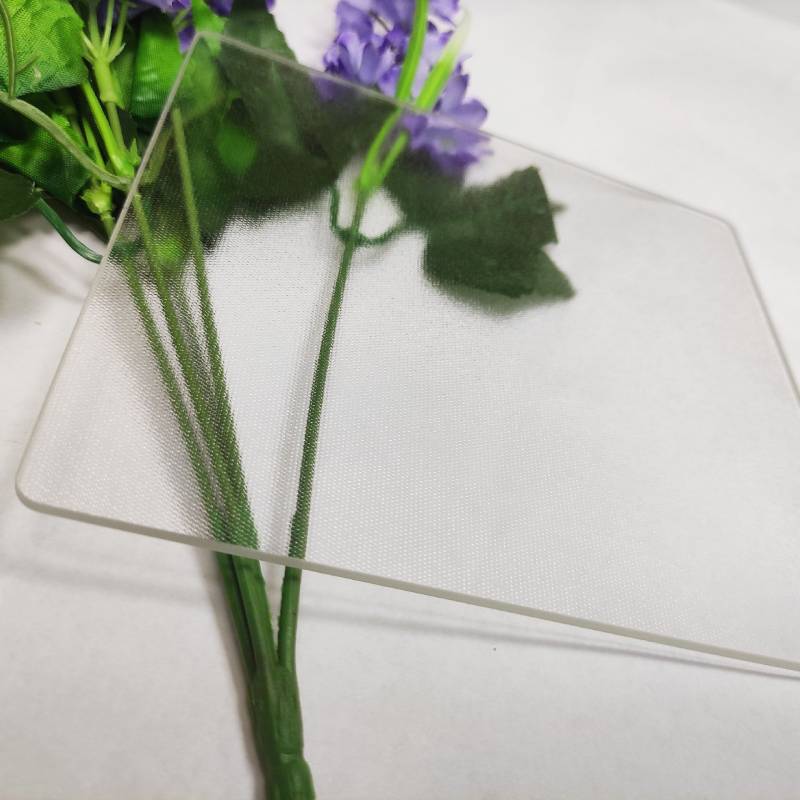The Evolution of Patterned Toughened Glass in Modern Architecture
In the realm of modern architecture, the use of patterned toughened glass has become a hallmark of creativity and innovation. This type of glass, also known as tempered glass, undergoes a unique process that enhances its strength and safety, making it ideal for architectural applications where both aesthetics and durability are paramount.
The process of creating patterned toughened glass involves heating the glass to a significant temperature and then rapidly cooling it. This thermal treatment induces a compressive stress on the surface of the glass, which counteracts any tensile stress that might occur from external forces. As a result, the glass is up to five times stronger than regular glass and shatters into small, relatively harmless pieces when broken, reducing the risk of injury.
Patterned toughened glass takes this a step further by incorporating intricate designs and patterns during the manufacturing process. These patterns can range from subtle textures to bold graphic elements, allowing architects to create visually striking facades and interior spaces. The patterns are achieved through various methods, including sandblasting, acid etching, or by using pre-designed templates during the tempering phase.
One notable advantage of patterned toughened glass is its versatility
One notable advantage of patterned toughened glass is its versatility

One notable advantage of patterned toughened glass is its versatility
One notable advantage of patterned toughened glass is its versatility
 patterned toughened glass
patterned toughened glass. It can be used in a wide array of settings, from commercial buildings seeking a distinctive look to residential projects aiming for privacy without sacrificing natural light. The patterns can also serve functional purposes, such as improving privacy while maintaining transparency or enhancing solar control by reducing glare and UV penetration.
Moreover, the use of patterned toughened glass aligns with sustainability goals. By allowing more natural light into buildings, it reduces the need for artificial lighting, thus lowering energy consumption. Additionally, its durability means less frequent replacements, contributing to a reduction in waste and long-term cost savings.
In conclusion, patterned toughened glass stands at the intersection of form and function, offering architects and designers a material that combines beauty, strength, and sustainability. As technology continues to advance, we can expect to see even more innovative uses of this versatile material, further pushing the boundaries of what is possible in the world of architecture.
 Afrikaans
Afrikaans  Albanian
Albanian  Amharic
Amharic  Arabic
Arabic  Armenian
Armenian  Azerbaijani
Azerbaijani  Basque
Basque  Belarusian
Belarusian  Bengali
Bengali  Bosnian
Bosnian  Bulgarian
Bulgarian  Catalan
Catalan  Cebuano
Cebuano  Corsican
Corsican  Croatian
Croatian  Czech
Czech  Danish
Danish  Dutch
Dutch  English
English  Esperanto
Esperanto  Estonian
Estonian  Finnish
Finnish  French
French  Frisian
Frisian  Galician
Galician  Georgian
Georgian  German
German  Greek
Greek  Gujarati
Gujarati  Haitian Creole
Haitian Creole  hausa
hausa  hawaiian
hawaiian  Hebrew
Hebrew  Hindi
Hindi  Miao
Miao  Hungarian
Hungarian  Icelandic
Icelandic  igbo
igbo  Indonesian
Indonesian  irish
irish  Italian
Italian  Japanese
Japanese  Javanese
Javanese  Kannada
Kannada  kazakh
kazakh  Khmer
Khmer  Rwandese
Rwandese  Korean
Korean  Kurdish
Kurdish  Kyrgyz
Kyrgyz  Lao
Lao  Latin
Latin  Latvian
Latvian  Lithuanian
Lithuanian  Luxembourgish
Luxembourgish  Macedonian
Macedonian  Malgashi
Malgashi  Malay
Malay  Malayalam
Malayalam  Maltese
Maltese  Maori
Maori  Marathi
Marathi  Mongolian
Mongolian  Myanmar
Myanmar  Nepali
Nepali  Norwegian
Norwegian  Norwegian
Norwegian  Occitan
Occitan  Pashto
Pashto  Persian
Persian  Polish
Polish  Portuguese
Portuguese  Punjabi
Punjabi  Romanian
Romanian  Russian
Russian  Samoan
Samoan  Scottish Gaelic
Scottish Gaelic  Serbian
Serbian  Sesotho
Sesotho  Shona
Shona  Sindhi
Sindhi  Sinhala
Sinhala  Slovak
Slovak  Slovenian
Slovenian  Somali
Somali  Spanish
Spanish  Sundanese
Sundanese  Swahili
Swahili  Swedish
Swedish  Tagalog
Tagalog  Tajik
Tajik  Tamil
Tamil  Tatar
Tatar  Telugu
Telugu  Thai
Thai  Turkish
Turkish  Turkmen
Turkmen  Ukrainian
Ukrainian  Urdu
Urdu  Uighur
Uighur  Uzbek
Uzbek  Vietnamese
Vietnamese  Welsh
Welsh  Bantu
Bantu  Yiddish
Yiddish  Yoruba
Yoruba  Zulu
Zulu 

 One notable advantage of patterned toughened glass is its versatility
One notable advantage of patterned toughened glass is its versatility
One notable advantage of patterned toughened glass is its versatility
One notable advantage of patterned toughened glass is its versatility